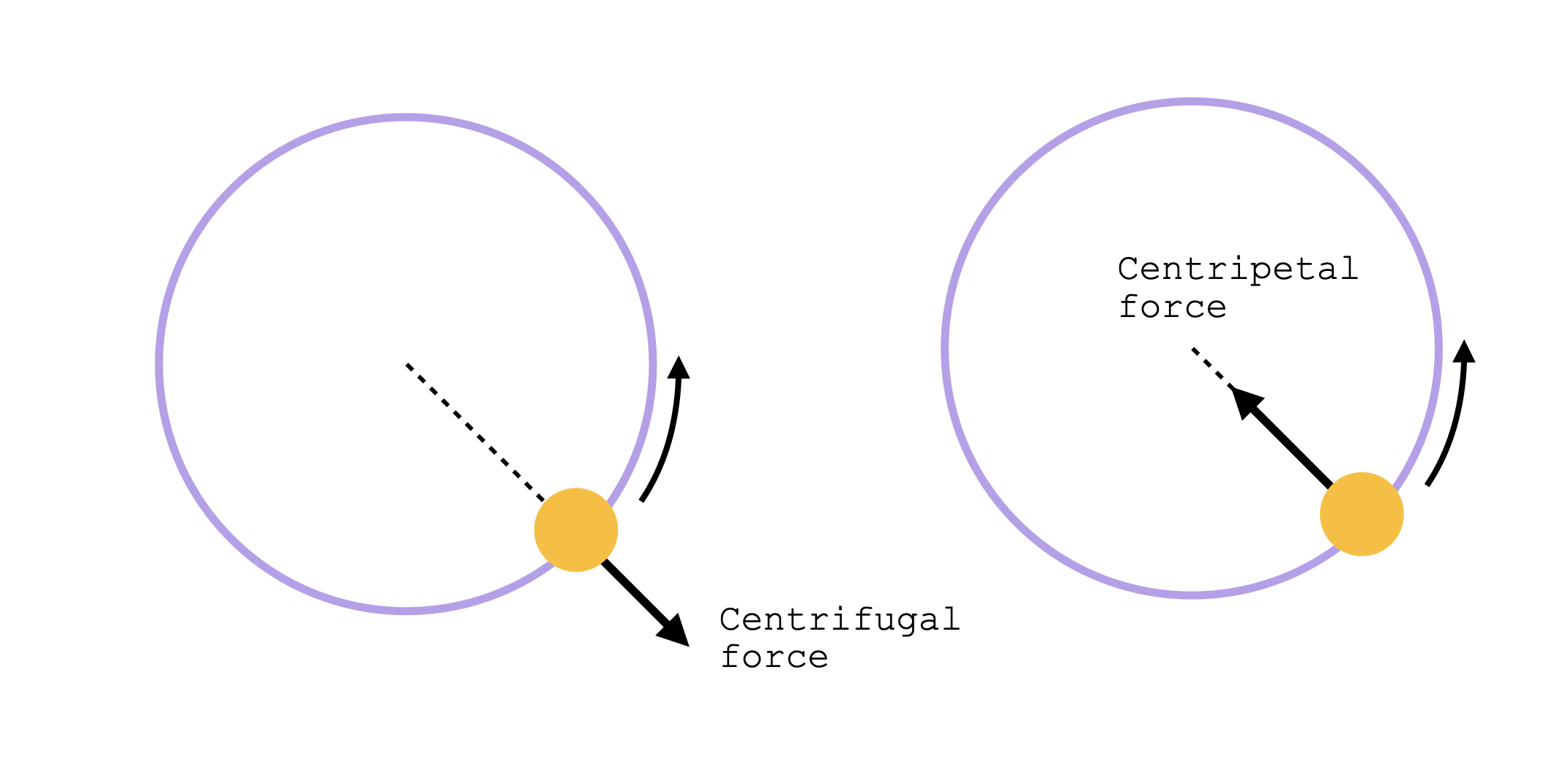
Centrifugal vs Centripetal Forces
These two forces often get tangled up in physics discussions, especially when dealing with circular motion. Let’s break them down clearly:
🌀 Centripetal Force: The Real One
- Direction: Always points toward the center of the circle.
- Nature: A real force that keeps an object moving in a curved path.
- Examples:
- Tension in a string when swinging a ball in a circle.
- Gravitational pull keeping planets in orbit.
- Friction between tires and road when a car turns.
- Formula:
where \(m\) is mass, \(v\) is velocity, and \(r\) is radius of the circular path.
🌪️ Centrifugal Force: The Illusion
- Direction: Appears to push away from the center.
- Nature: A fictitious or pseudo-force — it’s not real in an inertial frame.
- Why it feels real: If you’re inside a rotating system (like a spinning ride), you feel like you’re being flung outward. That sensation is what we call centrifugal force.
- Examples:
- Feeling pushed outward in a turning car.
- Clothes pressed against the drum in a washing machine.
🧠 Frame of Reference Matters
| Force Type | Direction | Real or Fictitious | Frame of Reference |
|---|---|---|---|
| Centripetal | Toward center | ✅ Real | Inertial (stationary) |
| Centrifugal | Away from center | ❌ Fictitious | Non-inertial (rotating) |
So, they’re two sides of the same coin — centripetal is the actual force keeping things in circular motion, while centrifugal is how that force feels from inside the rotating system.
Note:
Current version of this post is generated partially using generative AI.